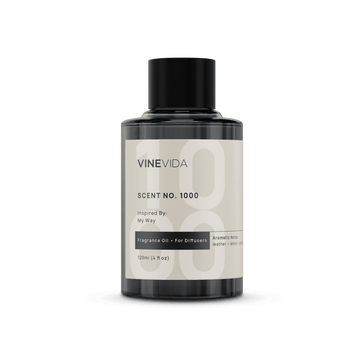Parsley Seed Essential Oil: Uses, Benefits, and Blends
Scientific Name: Petroselinum Sativum
Origin: France
Plant Part: Seeds
Scent: Fresh, herbaceous, leafy
Color: Pale green
Consistency: Thin
Initial Aroma Strength: Moderate
Extraction Method: Steam distillation
What does Parsley Seed Essential Oil Smell Like?
The scent of parsley seed essential oil is predominantly green and herb. It has a sweet, warm spicy scent.
What Blending Note is Parsley Seed Essential Oil?
Parsley Seed essential oil is a middle-to-top note.
What does Parsley Seed Essential Oil Blend Well With?
Parsley seed blends well with citrus notes, woods, spices, and flowers.
Breaking Down Parsley Seed Essential Oil’s Chemical Components
According to the GCMS, our VINEVIDA Parsley seed essential oil
- Alpha pinene: 16.84%
- Beta pinene: 11.22%
- Myristicin: 29.65%
- Apiol: 22.32%
Uses for Parsley Seed Essential oil
- Digestive support
- Relaxation
- Detoxification
- Pain relief
Parsley Seed Essential Oil in History
Parsley in Ancient Greece
Parsley appears in an important, very ancient Greek myth. The Seven against Thebes were seven champions who raged war on Thebes. The King of Argus selected the seven to restore Polynices, son of the great Oedipus, to the Theban throne.
On their way to Thebes, the Seven stopped at Nemea and bore witness to a dreadful tragedy, the death of a child.
Euripides describes how Opheltes was the infant son of Euridice and Lycurgs, the priest of Zeus at Nemea, Lycurgus. One day Opheltes was left in the care of his foster mother, Hypsipyle, who took him out for a walk. On her foray, she encountered the "Seven against Thebes” who asked her where they could find a drink. She laid the babe on the ground to show them how to access a spring, and as she looked away, a fiery-eyed monstrous serpent bit the child as he slept. Blood poured from the wound onto the ground and where it fell, sprung parsley. (The word Parsley comes from Petrose, the Greek word for “Rock”)
The Seven killed the serpent, but it was too late. The child was dead. One of the Seven, the seer Amphiaraus, renamed the child Archemorus, which means the "Beginning of Doom", and interpreted the child's death as an omen of “slaughter to come” of The Seven at Thebes.
The Seven held funeral games to honor the child. These would go on to be the Nemean Games.
Parsley Foretells Doom
Over the coming weeks, a slaughter of the Seven did indeed ensue. Zeus struck Capaneus with a thunderbolt as he attempted to climb the city walls. Tydeus had, for a while, been protected by Athena who had intended to make him immortal, but seeing him eating the brains of his attacker changed her mind, and she left him to die. Polynices and his brother Eteocles killed each other and the earth swallowed up the seer, Amphiaraus. Amphariaraus had seen the future astutely.
Subsequently, the Nemean Games were held every two or three years to cycle to Olympic and Pythian Games in honor of the child and his family’s tutelary deity, Zeus. We read that winners of the games wore garlands made of parsley and were presented with celery wreaths, however, Latin texts refer to opium, which can mean “celery” or “parsley,”.
Parsley and The Underworld
The herb then became associated with the goddess of spring and queen of the underworld, Persephone. It was placed on graves, presumably because of the association with its divinity, but of course, it also had the added benefit of masking the stench of the rotting corpse. Therein, a phrase became common in Greek parlance. To “How is he? “ the reply "de'eis thai selinon" translated to “Only needs parsley”. Nothing left for him in this life except to furnish his grave.
Perhaps unsurprisingly then, unlike we do, the Greeks did not eat parsley. Instead, they used it as animal fodder. Homer mentions chariot horses being fed parsley to improve their strength and stamina.
Gardeners will tell you that parsley is well known as being a difficult herb to grow from seed, which may be the reason that Medieval thought was that seeds had to travel to hell and back nine times before they would grow. (Interesting that they would likely see Persephone a few times on their journey, isn’t it?) Moreover, it was also said that parsley should only ever be planted on Good Friday and that it should be planted by a man. God forbid that women should plant it, especially if they were unwed because the Devil would make visitation upon any virgin who planted parsley.
Parsley of Passover
One of the most important rituals of the Jewish calendar is the creation of the Seder plate for Passover. At least five foods go on the seder plate: zero (shank bone) beitzah (egg), maror (bitter herbs) karpas (vegetables), and a sweet paste called haroset. Some seder plates also provide room for Hazrat (another form of the bitter herbs).
For many people, karpas are ritualized using parsley to represent spring greens and hope for new life. As the story of the Passover is told, the parley is dipped into saltwater to represent injustice which is ever present in the world.
I rather like the notion from old English folklore that parsley takes away bad feelings in the same way it takes away bad breath.
Parsley as Ancient Medicine
Despite it not being eaten, in ancient Greece, Parsley was however used as an oral medicine. Hippocrates cites it in recipes to prevent disease but also describes parsley being used by women to procure abortions. According to Culpepper, Galen also recommended using parsley against “the falling sickness” which is what we would call seizures today.
Medieval Parsley Usage
By medieval times culinary usage of parsley had become more common and became quite beloved in the kitchen.
Culpepper describes how it is good for digestion. He recommends it to help release retained urine and to prompt menstruation. He speaks of how it can be helpful for flatulence or griping colic in children.
He says parsley is effective against “the venom of any poisonous creature” and takes the black and blueness out of bruises.
In concoction with other digestive herbs, Parsley “opens obstructions of the liver and spleen, and expels the dropsy and jaundice by urine.” Dropsy is swelling or more specifically, edema. He says it is good for coughs and recommends laying parsley leaves over sore and inflamed eyes as well as over breasts that are engorged or painful from mastitis. He describes parsley as being very good for taking “the hardness” out of them.
John Gerard wrote in his 1633 edition of The Herball, that parsley was used as a diuretic and to help to pass kidney stones. He also recommended it as an aid for menstruation and childbirth.
Hildegard of Bingen created a parsley wine that she recommended to fortify circulation. It was used as a universal remedy against nervous heart pain and even cardiac disease.
Understanding Parsley Seed Essential Oil
The first thing to say about parsley seed essential oil is the properties are not the same as the parsley plant: they are much, much stronger. As such then, while parsley seed essential oil is a safe and useful oil, it should be used with caution and respect.
The reason for concern is two very strong constituents myristicin and apiol.
Apiol is abortifacient and, in large quantities, so therefore even though levels are relatively low in parsley seed essential oil, it is advised that you avoid using parsley seed essential oil at any time in the pregnancy.
Myristicin has psychoactive and hallucinogenic properties. Its structure closely resembles that of certain compounds found in amphetamines. In large enough amounts, it is capable of producing psychotropic effects similar to those you might expect from MDMA. The levels of parsley seed essential oil are low. They are higher in nutmeg essential oil. Furthermore, myristicin interferes with multiple enzyme processes and signaling pathways in the body, notably the monoamine inhibitors which modulate the production and turnover of neurotransmitters. The low levels of myristicin in Parsley
seed essential oil is unlikely to cause any of these issues (Tisserand and Young, 2014) However, this reinforces the advice to keep dilutions of parsley seed essential oil low.
Parsley seed essential oil is not suitable for use during breastfeeding (Lactation Database 2006)
Precautions
Maximum dilution for topical administration is 1.1%. (Tisserand and Young, 2014)
Yield of Parsley Seed Essential Oil
Interestingly there is no significant essential oil found in the leaves and aerial parts of the plan. All the goodness only appears in the parsley SEED essential oil. (This should not deter you from enjoying the benefits of eating parsley leaves.
The yield of Parsley Seed essential oil is 0.76%.
Aromatherapy Uses for Parsley Seed Essential Oil
Historically, parsley seed essential oil has mainly been used for its refreshing and detoxifying nature.
It has constituents with diuretic effects (another reason to avoid it during pregnancy) and is useful for issues where there are build-ups of fluid. Swollen ankles after injury, puffy eyes, water retention due to PMT.
It is often cited as reducing the size of blood vessels. Although there is not yet scientific evidence to support this, it is often used in skin care for broken capillaries and also in creams for thread veins on the legs.
Its high levels of alpha-pinene make it an excellent choice for aches and pains, especially for degenerative conditions like osteoarthritis. Alpha pinene has been proven to help encourage new production of chondrocytes which form collagen in the spinal column.
Useful for digestive problems, it is also very helpful for encouraging appetite and for relieving bad breath. (Make a mouthwash. Because of the myristicin and apiole, not recommended to swallow.)
Parsley Seed Essential Oil Blends: DIY Recipes
Moisturizer for Broken Capillaries
- 1fl oz Aqueous Cream (available over the counter at the pharmacy)
- 1 fl oz rose hydrolat ( Rosewater - Rosa damascena)
- 10 drops eco-preservative
- 5 drops Rose Absolute (Rosa damascena)
- 5 drops Parsley Seed Essential Oil (Petroselenium crispum)
- 1 drop of Myrrh Essential Oil (Commiphora myrrha)
Method of Use: Use morning and evening after cleansing and toning the complexion.
Safety: Not suitable for use during pregnancy.
Refreshing Massage Oil for Tired Heavy Legs
- 1 tbsp Grapeseed Carrier Oil (Vitis vinifera)
- 2 drops Parsley Seed Essential Oil (Petroselenium crispum)
- 1 drop Cypress Essential Oil (Cupressus sempervirens)
- 1 drop Spearmint Essential Oil (Mentha spicata)
Method of Use: Use as and when required. Ideally, get your feet up for a rest afterward!
Safety: Not suitable for use during pregnancy.
Why Choose VINEVIDA
At VINEVIDA, we love botanicals and the planet they come from. We believe in stocking the best at affordable prices and supplying to the discerning, which is why we are also members of both the Alliance of International Aromatherapists and the National Association of Holistic Aromatherapy. In recognition of our excellent standard of product, we are proud to hold a 2021 Certificate of Registration as a Cosmetic Products Establishment with the U.S. Drugs and Food Administration.
Our joy at seeing people make beautiful things means we stock from the smallest amounts to the largest. Our bulk essential oils’ prices begin with our smallest essential oil of 10ml to our largest of 396lb, meaning any manufacturing company can afford to stock as many or as few oils as their business can accommodate without running the risk of spoilage of some of nature’s most precious commodities. So why not see if you can save money by buying your Parsley Seed essential oil in bulk? Remember how stable it is proven to be, so as long as you store it carefully, it should last and last.
Don’t forget too; we like to look after our customers with reasonable prices and excellent customer service and reward the loyal ones with money-off discounts over the year.
Conclusion
So, why not check out if you qualify for our loyalty scheme and start saving today with an environmentally friendly choice of oil for skin, hair, massage oils, and soapmaking? Add VINEVIDA Parsley Seed Essential to your cart today.

You may also like
Recently viewed

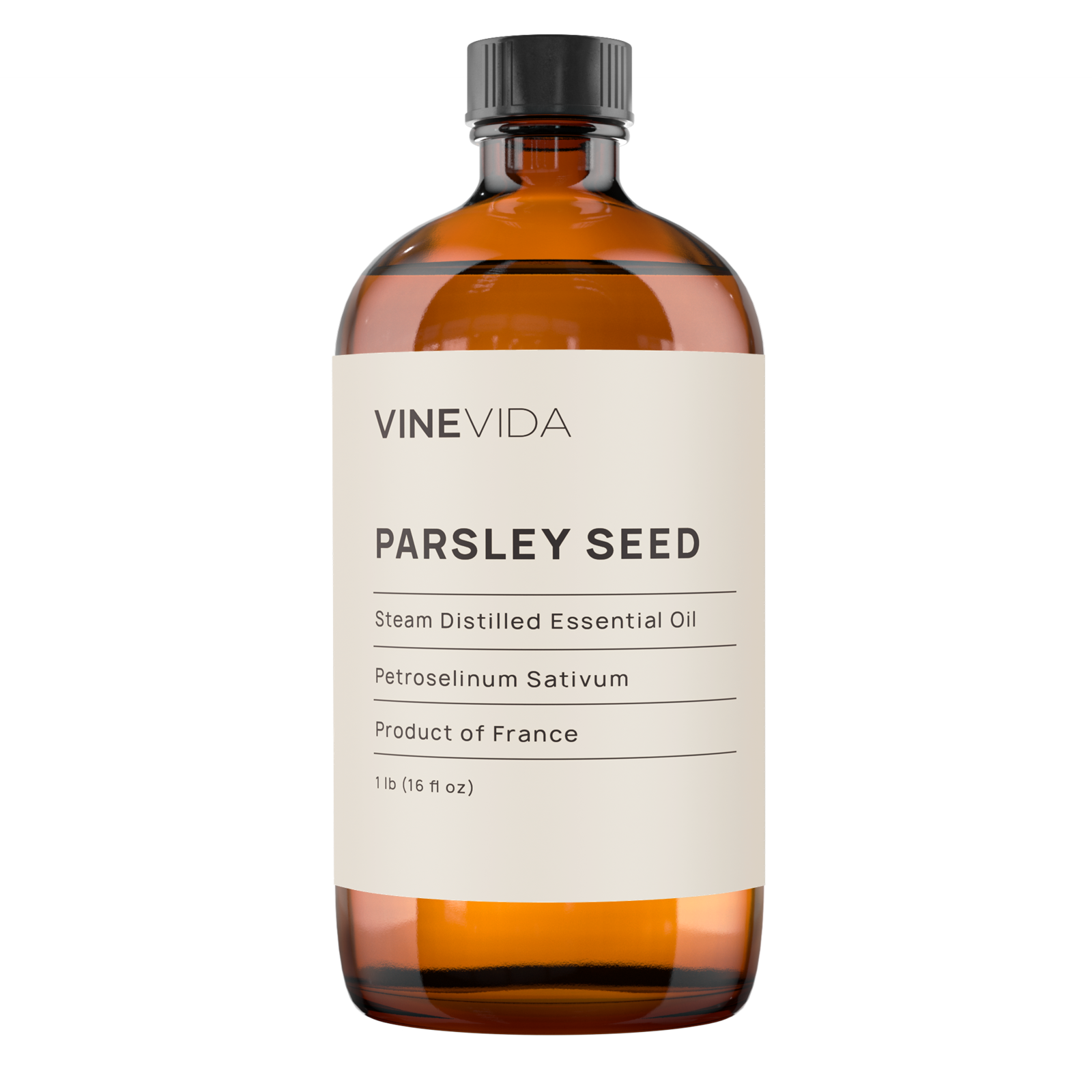
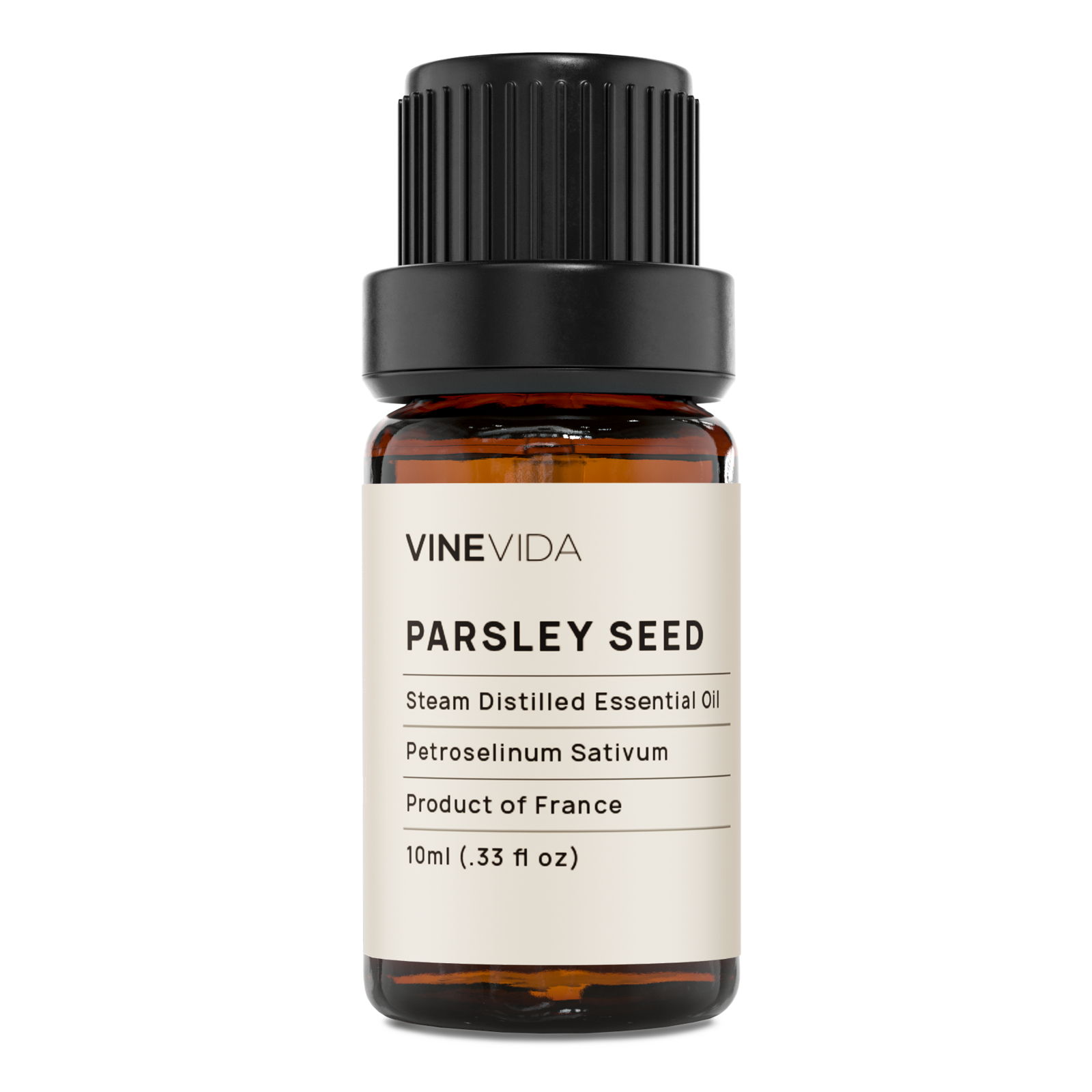
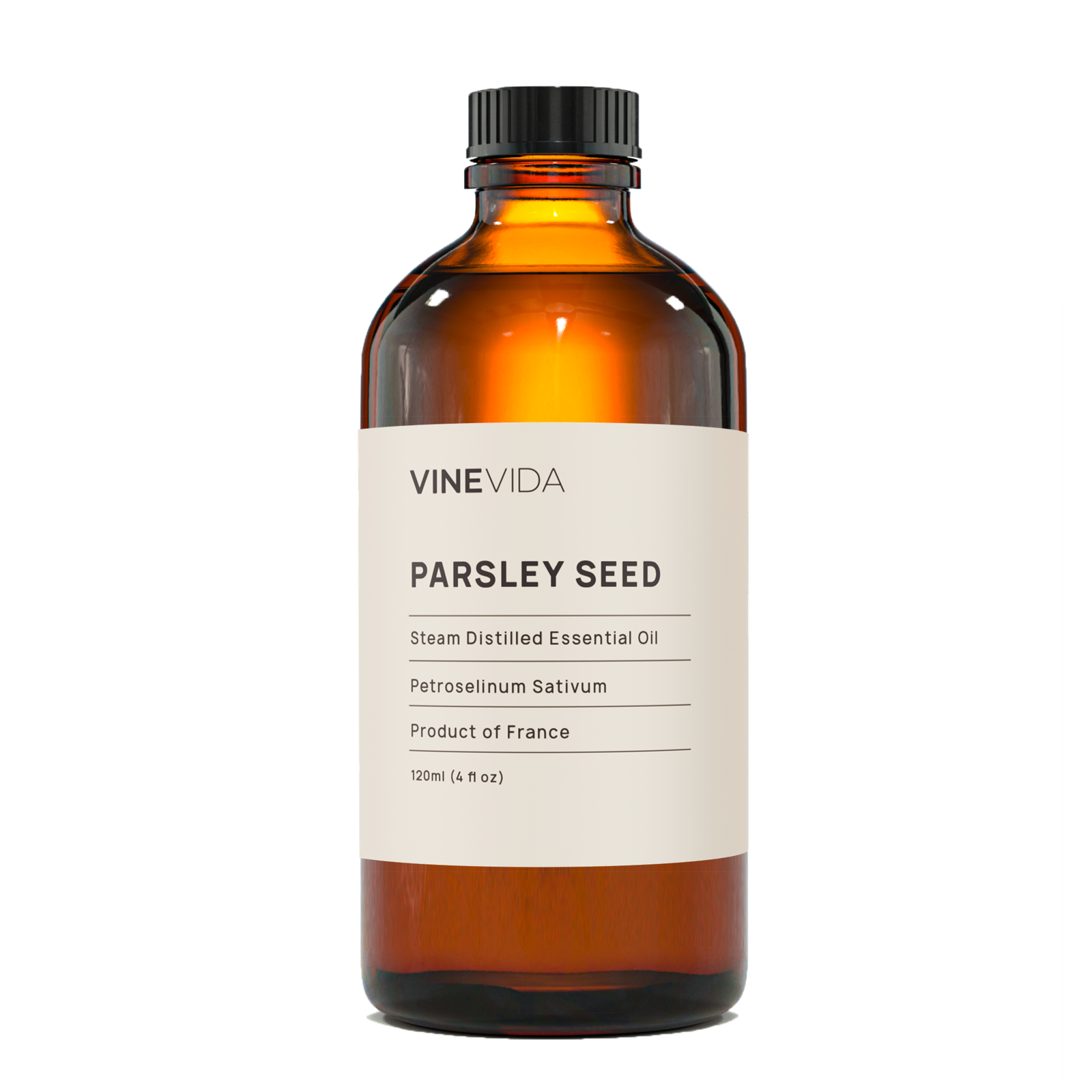

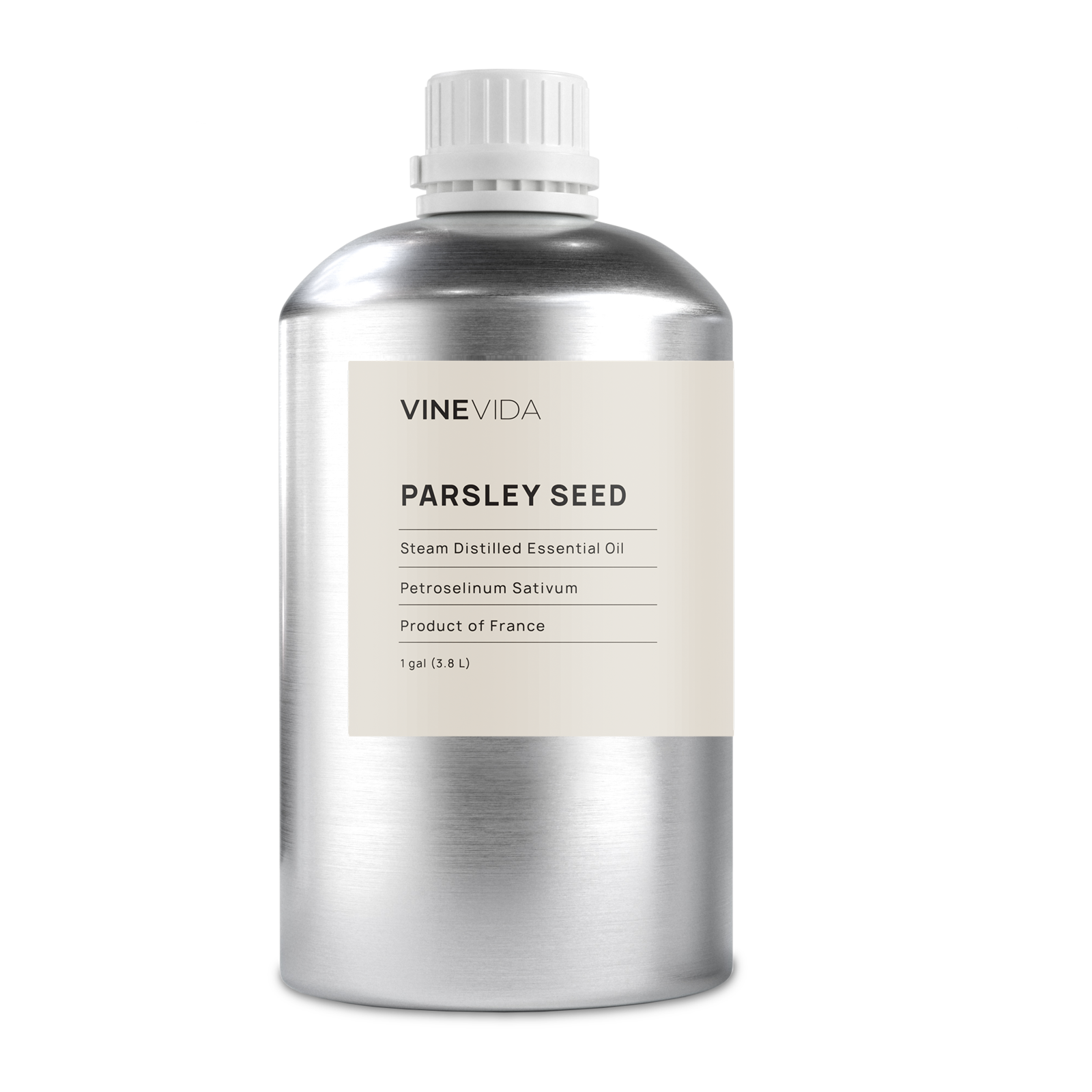

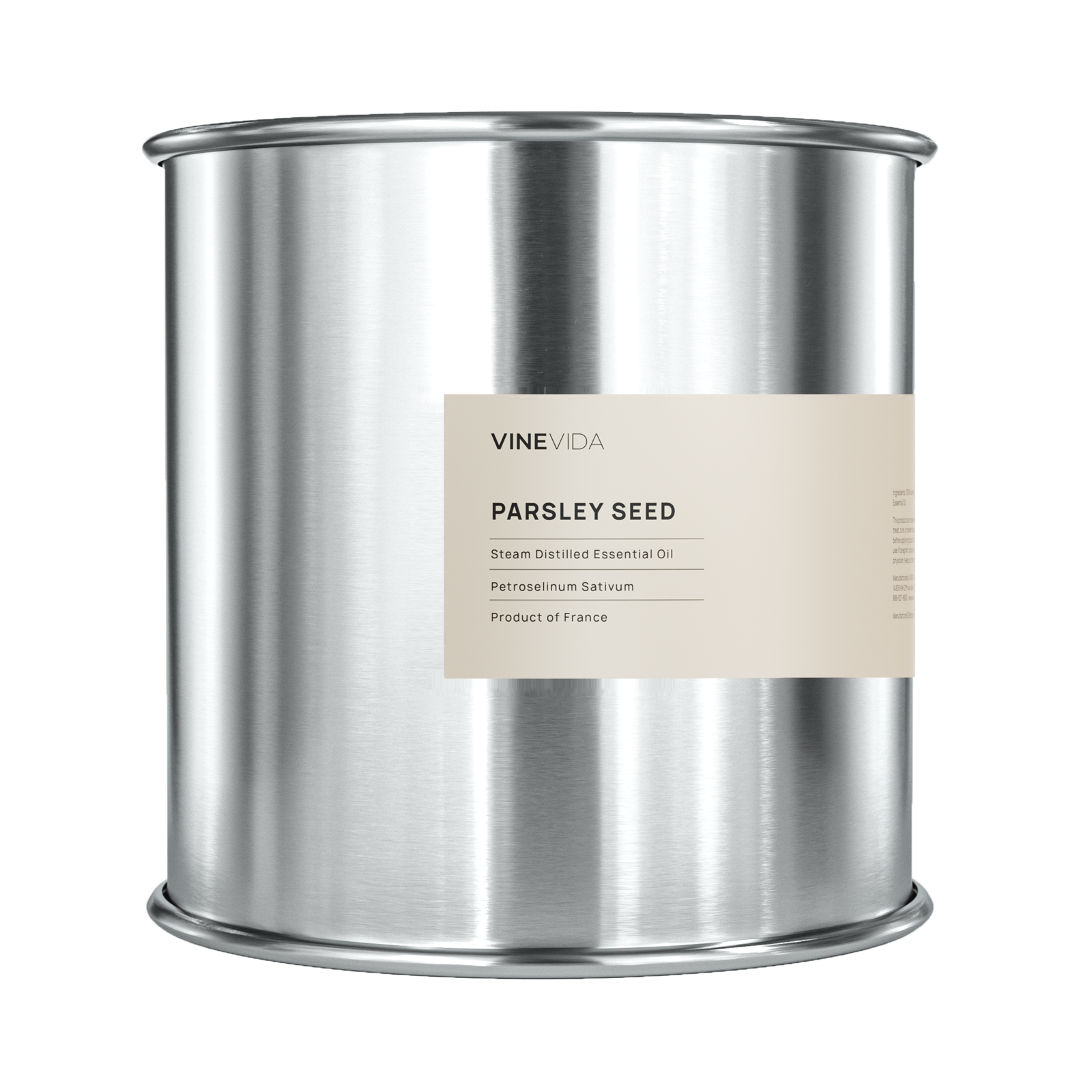
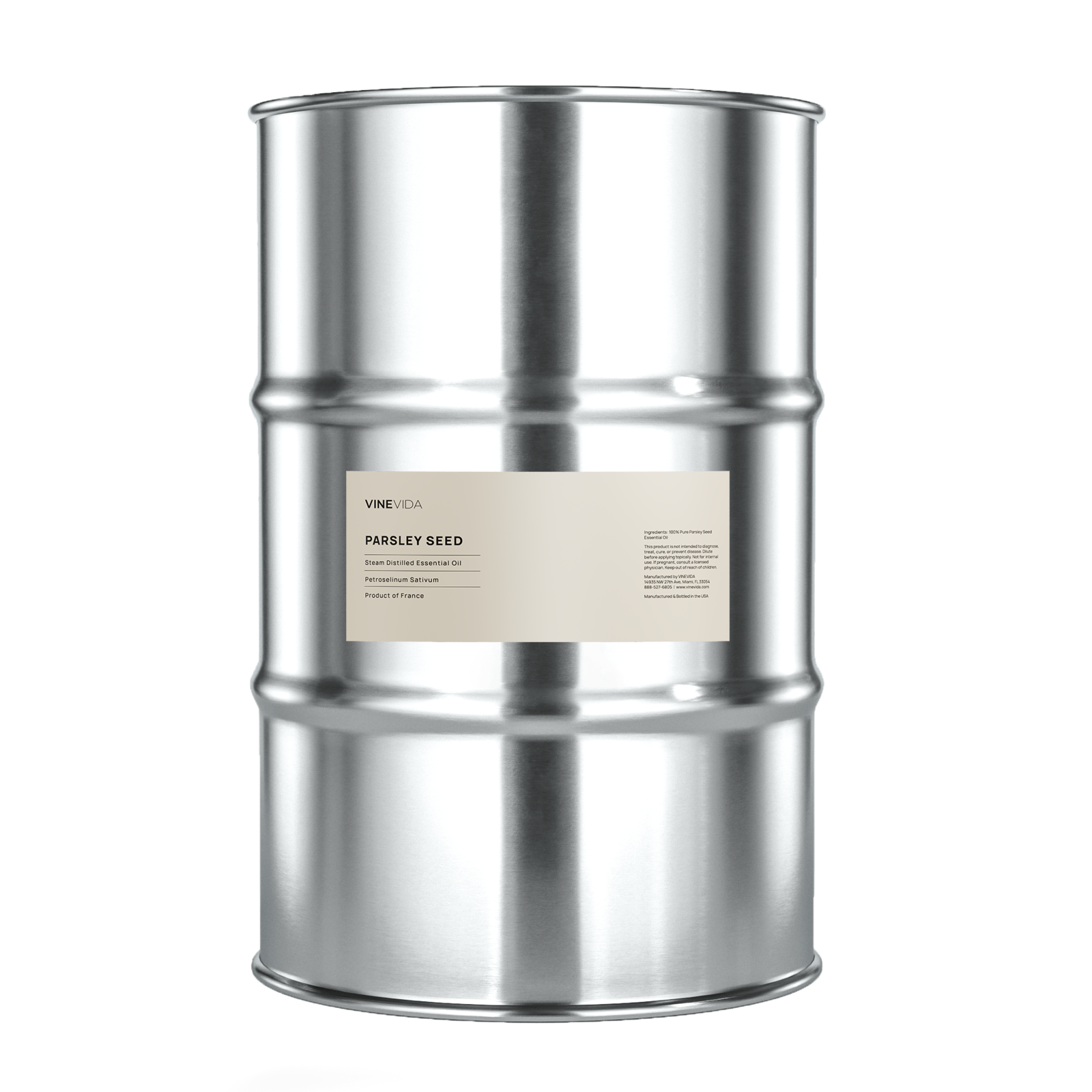





 IFRA Statement
IFRA Statement


















